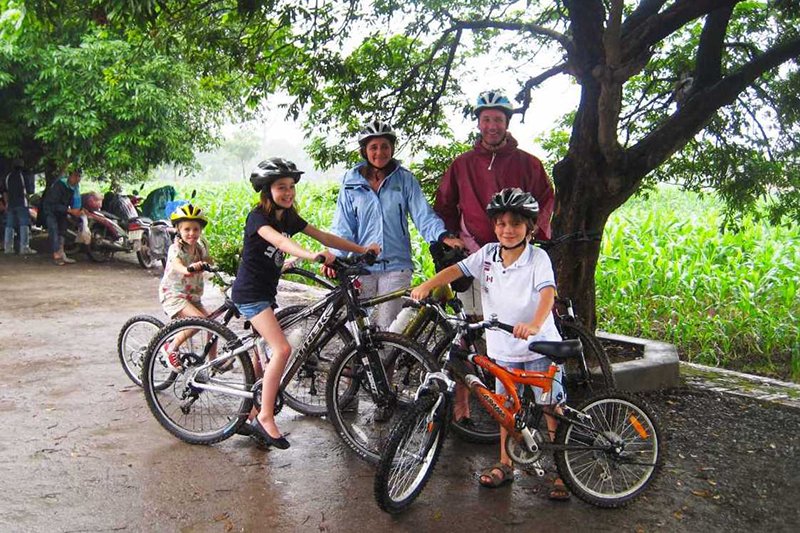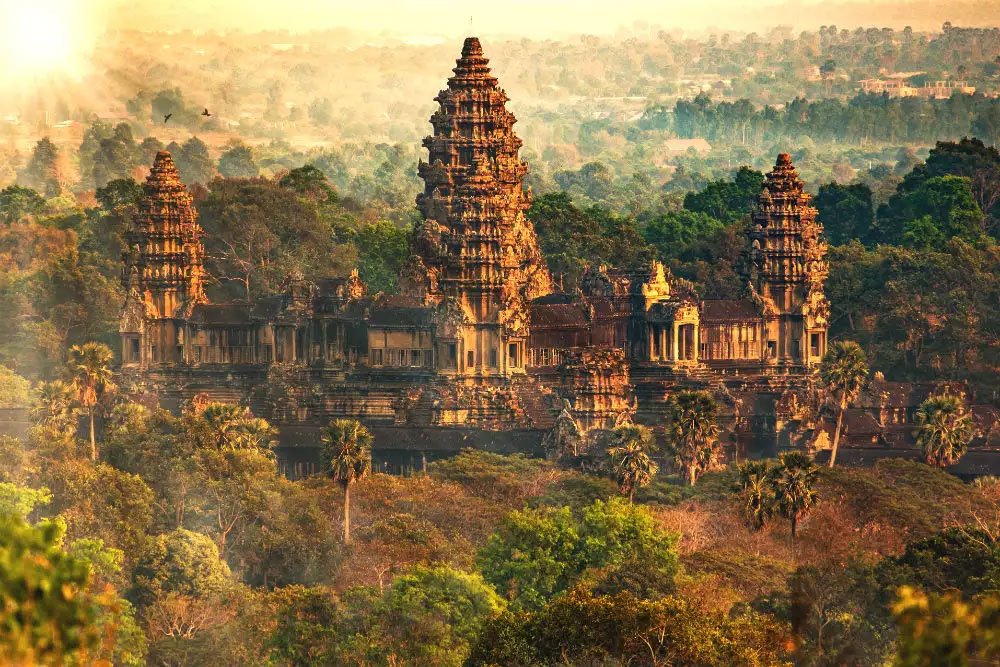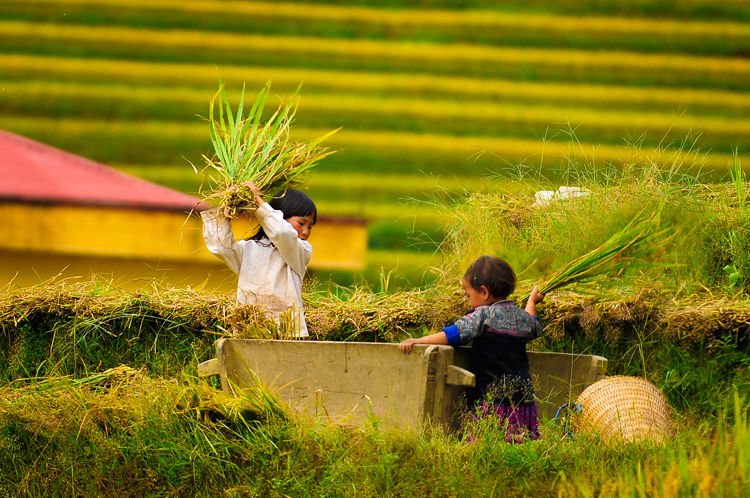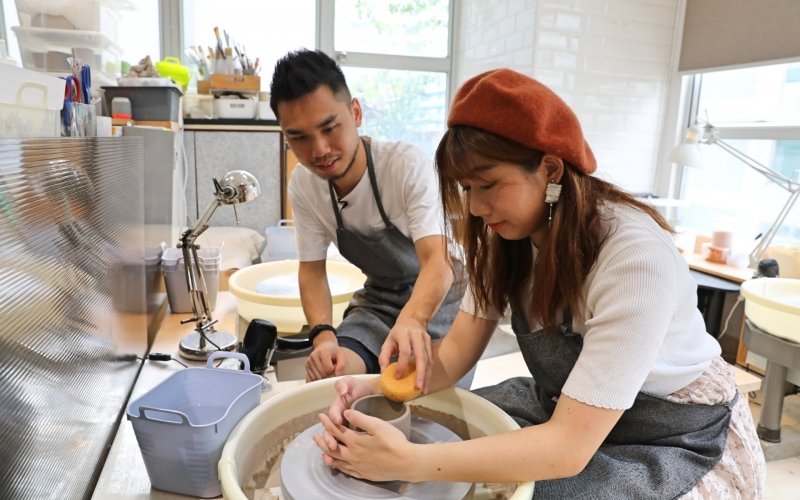15 Ng. 100 Đ. Nguyễn Xiển, Thanh Xuân Nam, Thanh Xuân, Hà Nội 100000
Imagine a vast landscape punctuated by colossal Buddha statues carved into a mountainside, their serene expressions guarding secrets from over 1,500 years ago. Picture a monastery clinging precariously to a sheer cliff face, defying gravity with its ingenious construction. Envision a city that once stood as the powerful capital of a dynamic northern dynasty, leaving behind an artistic and cultural legacy that profoundly shaped Chinese civilization. This is Datong (大同 - Dàtóng), a historically significant city in Shanxi Province, justly renowned as the gateway to some of China's most breathtaking and important ancient Buddhist art. More than just a city, Datong is a profound journey into a pivotal, yet often overlooked, era of Chinese history, offering an unparalleled glimpse into early Buddhist influence and the grandeur of the Northern Wei Dynasty.
This comprehensive guide will lead you on a captivating journey through the multifaceted world of Datong – from the awe-inspiring Yungang Grottoes and the daring Hanging Monastery to the majestic Huayan Temple and the vibrant modern city that preserves its ancient soul. We'll delve into its fascinating history as an imperial capital, its unparalleled artistic heritage, and the distinctive flavors of its regional cuisine. Crucially, we'll also show you how Golden Trail Travel can unlock an unforgettable and seamlessly organized adventure, ensuring you discover the true essence and hidden gems of this remarkable historical heartland. Prepare to be awed by its scale, enlightened by its artistry, and invigorated by its enduring spirit.
To truly appreciate Datong today, it's essential to understand its strategic geographical position and the compelling historical narratives that have shaped its identity as a crucial northern hub and a repository of early Chinese Buddhist art.
Datong is located in the northern part of Shanxi Province, near the border with Inner Mongolia. It lies on a high plateau, characterized by dry, sometimes dusty conditions, and is nestled at the edge of the Loess Plateau, a vast area of highly erodible, fertile soil that defines much of northern China's landscape.
Strategic Northern Gateway: Historically, Datong's location made it a vital military and trading outpost on China's northern frontier, a strategic gateway between the agricultural heartland and the nomadic steppes. It served as a key defensive position against northern invaders.
Distinct Seasons: Datong experiences a temperate continental monsoon climate with distinct seasons. Summers are warm and dry, while winters are very cold and dry, often with snow. Spring and autumn are generally pleasant, making them good times for visiting.
Datong's most significant historical period revolves around its role as an imperial capital, a center of religious patronage, and, more recently, a hub of industrial development.
Early Foundations: The area around Datong has been inhabited for millennia, but its rise to prominence began in the 4th century CE.
Northern Wei Dynasty Capital (398–494 CE): The Buddhist Golden Age:
This period marked Datong's zenith. It became the capital of the Northern Wei Dynasty (北魏 - Běi Wèi), a powerful state established by the Tuoba Xianbei, a nomadic ethnic group that eventually adopted Chinese culture and Buddhism.
Under Northern Wei patronage, Buddhism flourished immensely. Datong became a crucial center for Buddhist art, particularly the Yungang Grottoes (云冈石窟), which were carved during this era, showcasing a unique blend of Chinese and Central Asian Buddhist artistic styles.
The Northern Wei court also encouraged the construction of magnificent temples and the translation of Buddhist scriptures, making Datong a spiritual and cultural beacon.
Liao and Jin Dynasties (10th-13th Centuries): Resurgence and Reconstruction:
After the Northern Wei moved its capital south to Luoyang, Datong's importance diminished. However, it experienced a resurgence under the Liao Dynasty (辽朝) and Jin Dynasty (金朝) (both established by non-Han groups), who also chose Datong (then called Xijing, "Western Capital") as a secondary capital.
Many of Datong's existing grand wooden temples, such as Huayan Temple (华严寺) and Shanhua Temple (善化寺), were built or extensively rebuilt during these periods, showcasing the architectural styles of these dynasties.
Ming and Qing Dynasties (14th-20th Centuries): Border Town and Decline:
Under the Ming Dynasty, Datong became a strategic border garrison town on the northern frontier, with a rebuilt city wall. Its glory as a capital faded, and it primarily served a defensive role.
20th Century and Modern Era: Coal and Cultural Revival:
In the modern era, Datong became a major coal mining hub for China, driving significant industrial development but also leading to environmental challenges.
In recent decades, with a focus on sustainable development and tourism, Datong has been undergoing a remarkable transformation. Efforts have been made to clean up the environment, restore its ancient city walls, and promote its invaluable historical and cultural assets, particularly the Yungang Grottoes and the Hanging Monastery, as world-class tourist destinations.
Datong's cultural identity is deeply intertwined with its imperial past, its profound Buddhist artistic legacy, and its history as a northern frontier city.
Buddhist Artistic Heritage: The city is a living museum of early Chinese Buddhist art, particularly evident in the scale and beauty of the Yungang Grottoes, which represent a pinnacle of Buddhist sculptural art.
Frontier Spirit: Its history as a northern defensive outpost has instilled a sense of resilience and straightforwardness in its people and its culture.
Northern Chinese Traditions: Datong reflects typical northern Chinese customs, including a preference for wheat-based foods (noodles, dumplings) and hearty, warming dishes.
Architectural Grandeur: The city boasts some of China's most impressive remaining Liao and Jin Dynasty temple architecture, characterized by robust wooden structures and intricate carvings.
Datong offers an extraordinary array of attractions that powerfully connect visitors to China's early Buddhist art, its imperial history, and its unique cultural landscape, providing an incredibly rich and educational travel journey.
Yungang Grottoes (云冈石窟 - Yúngāng Shíkū): UNESCO World Heritage Site:
The undisputed highlight of Datong and one of China's three most famous ancient Buddhist grottoes (along with Longmen and Mogao).
Colossal Scale: Carved into the cliffs of Wuzhou Mountain, these 252 caves and niches contain over 51,000 Buddhist statues, ranging from towering giants (up to 17 meters / 56 ft tall) to delicate miniatures.
Northern Wei Art: Represent a distinct artistic style influenced by Indian and Central Asian Buddhist art, gradually evolving to incorporate more Chinese characteristics. Marvel at the intricate details, serene expressions, and the sheer scale of devotion. Allow several hours to explore thoroughly.
Hanging Monastery / Xuankong Temple (悬空寺 - Xuánkōng Sì): Architectural Marvel (Day Trip):
A truly breathtaking and unique structure, located about 65 kilometers (40 miles) south of Datong, clinging precariously to a cliff face on Mount Hengshan.
Engineering Feat: Built over 1,500 years ago during the Northern Wei Dynasty, it's famous for its ingenious construction with wooden pillars seemingly supporting the complex from below (though much of the support comes from embedded beams).
Three Religions: Uniquely houses shrines for Buddhism, Taoism, and Confucianism, representing religious harmony. A thrilling and unforgettable visit.
Mount Hengshan (恒山 - Héngshān): One of China's Five Sacred Mountains (Day Trip):
Near the Hanging Monastery, Mount Hengshan is one of China's Five Great Taoist Mountains. While less dramatic than some other sacred mountains, it offers scenic views and various Taoist temples. The Hanging Monastery is part of its overall scenic area.
Datong City Wall (大同城墙 - Dàtóng Chéngqiáng): Ming Dynasty Fortification:
A grand, fully restored Ming Dynasty city wall that encircles the historical center of Datong.
Walk or Cycle: You can walk or cycle along the top of the wall for panoramic views of the reconstructed old city and a sense of its scale. It's especially beautiful when illuminated at night.
Huayan Temple (华严寺 - Huáyán Sì): Grand Buddhist Complex:
A magnificent Buddhist monastery within Datong city, dating back to the Liao Dynasty (11th century).
Liao/Jin Architecture: Houses some of China's most important and well-preserved Liao and Jin Dynasty wooden architectural structures, including the Grand Hall (Daxiong Bao Dian) and the Sutra Preservation Hall (Bo Jia Jiao Cang Dian) with its unique rotating Sutra cabinet.
Painted Statues: Admire the beautiful and rare Liao Dynasty painted clay sculptures.
Shanhua Temple (善化寺 - Shànhuà Sì): Another Liao Dynasty Gem:
Another large and well-preserved Buddhist temple complex in Datong, also dating to the Liao and Jin Dynasties.
Pilu Pavilion: Famous for its impressive main hall and its multi-tiered Pilu Pavilion, housing intricate Buddhist statues.
Nine Dragon Screen (九龙壁 - Jiǔlóng Bì): Imperial Splendor:
The largest and oldest glazed tile Nine Dragon Screen in China, dating back to the Ming Dynasty. It was originally part of a prince's palace.
Vibrant Colors: Admire the vibrant colors and intricate details of the nine coiling dragons, symbolizing imperial power and good fortune.
Datong Museum (大同市博物馆 - Dàtóng Shì Bówùguǎn): Regional History:
A modern museum showcasing Datong's rich history, particularly its role as the Northern Wei capital and its archaeological discoveries. Provides excellent context for your visits to the grottoes and temples.
Datong Coal Mining Museum (大同煤矿博物馆 - Dàtóng Méikuàng Bówùguǎn): Industrial Heritage:
For those interested in Datong's more recent industrial past, this museum provides insights into the city's extensive coal mining history, including an underground simulated mine experience.
Wooden Pagoda of Yingxian County (应县木塔 - Yìngxiàn Mùtǎ): Tallest Wooden Pagoda (Day Trip):
Located about 75 kilometers (47 miles) south of Datong. This magnificent pagoda, built in 1056 during the Liao Dynasty, is the tallest wooden pagoda in the world and one of the oldest entirely wooden structures in China.
Engineering Marvel: Standing at 67 meters (220 ft) tall, it's a testament to ancient Chinese carpentry and structural engineering, having withstood earthquakes and countless storms for nearly a millennium.
Earth Forest (土林 - Tǔlín) / Lion Forest (狮子林): Geological Wonders (Day Trip):
A unique geological formation of eroded loess (yellow earth) pillars and shapes, resembling a "forest" of natural sculptures. Offers a stark and beautiful contrast to the historical sites.
Datong's cuisine is representative of Northern Chinese cuisine, specifically Shanxi cuisine (晋菜 - Jìncài), which is famous for its noodles (面食 - miànshí), vinegars, and often hearty, savory, and sometimes slightly sour flavors. Wheat is a staple, and the cuisine reflects the region's agricultural traditions and a preference for warming dishes in the colder climate.
Datong Juedai Mian (大同刀削面 - Dàtóng Dāoxiāo Miàn): Knife-Cut Noodles:
While knife-cut noodles are famous throughout Shanxi, Datong is particularly renowned for its version. These thick, chewy noodles are shaved directly from a block of dough into boiling water and served with various rich, savory broths or sauces, often featuring lamb, beef, or tomato and egg. It's a local specialty.
Yangrou Paomo (羊肉泡馍 - Yángròu Pàomó): Lamb Bread Soup (Northern Style):
Similar to the famous Xi'an dish, but Datong's version might be slightly different in seasoning or bread type. It's a hearty and warming lamb soup with pieces of unleavened bread.
Shanxi Vinegar (山西醋 - Shānxī Cù): Liquid Gold:
Shanxi Province is the capital of Chinese vinegar, known for its high-quality, aged black vinegar. It's used extensively in Datong's cooking, as a dipping sauce for dumplings and noodles, and sometimes even as a health drink. Don't leave without trying the local vinegar.
Hun Yuan Liangfen (浑源凉粉 - Húnyuán Liángfěn): Cold Noodles/Jelly:
A refreshing cold dish made from a jelly-like substance (often from potato starch) cut into strips, served with chili oil, vinegar, garlic, and other seasonings. A popular summer snack.
Datong Braised Lamb (大同烩羊肉 - Dàtóng Huì Yángròu): Hearty Stew:
A rich and savory stew featuring tender pieces of lamb, often with potatoes, carrots, and various spices. Perfect for cold Datong winters.
Buckwheat Noodles (荞麦面 - Qiáomài Miàn): Healthy Option:
Given the region's produce, buckwheat noodles are common, served in various forms, often with a simple yet flavorful sauce.
Shanxi Steamed Dumplings (饺子 - Jiǎozi) and Potstickers (锅贴 - Guōtiē):
Ubiquitous in northern China, and Datong offers delicious versions with various fillings.
Yellow Millet (黄米面 - Huángmǐ Miàn) Based Snacks:
Dishes and snacks made from yellow millet flour are common, such as "Yellow Rice Cake" (黄米糕 - Huángmǐ Gāo), which can be sweet or savory.
Culinary Tours: Golden Trail Travel can arrange dedicated food tours, taking you to authentic local noodle houses, family-run restaurants, and street food stalls, ensuring a truly immersive gastronomic journey through Datong's incredibly unique and delicious northern Chinese cuisine.
Navigating a historically profound city like Datong, with its monumental grottoes, daring hanging monastery, and ancient temples, requires meticulous planning and expert local knowledge to fully appreciate its scale and significance. This is where Golden Trail Travel becomes your invaluable partner, transforming your trip into a seamlessly planned, deeply insightful, and profoundly rewarding adventure.
Golden Trail Travel excels in designing bespoke tours that fully capture the multifaceted essence of Datong, catering to your specific interests, whether they are awe-inspiring Buddhist art, ancient engineering marvels, imperial history, or regional culinary exploration.
Optimized Yungang Grottoes Experience: They plan your visit to the Yungang Grottoes for optimal timing and access, allowing you to fully appreciate the scale and artistry of these UNESCO treasures.
Seamless Hanging Monastery & Wooden Pagoda Visits: They arrange the necessary transportation and logistics for day trips to the often remote, yet essential, sites like the Hanging Monastery and the Wooden Pagoda of Yingxian, maximizing your time and minimizing travel stress.
Deep Historical & Artistic Insights: Golden Trail Travel specializes in facilitating authentic and respectful encounters with Datong's unique heritage. They can arrange tours of the city's grand temples (Huayan, Shanhua), and its reconstructed City Wall, providing context that brings the Northern Wei and later dynasties to life.
Tailored Itineraries: From focusing purely on the major Buddhist art sites to integrating explorations of Datong's city center, its unique local cuisine, or even combining with other regional attractions like the Earth Forest, Golden Trail Travel can customize a tour that perfectly aligns with your passions, pace, and comfort level.
Visit Golden Trail Travel's website at https://goldentrailtravel.com/ to explore their diverse range of tours and begin crafting your own Datong ancient and Buddhist art adventure.
A key component of a Golden Trail Travel experience in Datong is access to their network of expert local guides. These guides are fluent in English and possess a profound understanding of Datong's unparalleled archaeological and artistic significance, its millennia-long imperial history, particularly the Northern Wei Dynasty, and the nuances of its regional culture and cuisine.
Art and History Interpreters: Your guide will provide insightful commentary on the intricate Buddhist iconography and sculptural styles of the Yungang Grottoes, explain the engineering marvel of the Hanging Monastery, and bring the stories of Datong's imperial past to life, making your understanding of these ancient wonders much deeper.
Cultural Bridge: They are essential for navigating the city, understanding local customs, and facilitating meaningful interactions, ensuring a respectful and authentic cultural immersion.
Culinary Navigators: For food tours, they can expertly guide you through local eateries, explain dishes like Datong knife-cut noodles and local stews, and help you discover the distinct flavors of Shanxi cuisine, ensuring a truly authentic and delicious gastronomic adventure.
Logistical Expertise: They are indispensable for navigating Datong's attractions, ensuring efficient travel between sites (especially for day trips to more remote locations), leading you to the best vantage points, and handling all local arrangements efficiently, allowing you to relax and fully immerse yourself in the experience.
Traveling to a city like Datong, with its monumental yet sometimes remote attractions, can involve specific logistical considerations. Golden Trail Travel ensures your comfort and peace of mind throughout your journey:
Transportation: Arranging all ground transportation to and within Datong (including transfers from Datong Yungang Airport (DAT) or Datong Railway Station, and private vehicles for daily excursions to the Yungang Grottoes, Hanging Monastery, Wooden Pagoda, and other sites). They ensure efficient and comfortable travel across diverse urban and rural landscapes.
Accommodation: Selecting reputable hotels in Datong that meet your comfort and budget requirements, from comfortable city hotels to those with traditional Chinese elements, ensuring a pleasant stay.
Trouble-free Travel: Handling any potential language barriers or logistical hurdles, such as purchasing tickets for various scenic areas, understanding local customs, finding authentic local eateries, or advising on appropriate clothing and etiquette for visiting religious sites. They allow you to relax and fully immerse yourself in the experience.
Datong's unique historical significance makes it an ideal central point for exploring other regions of China, particularly Shanxi Province. Golden Trail Travel can seamlessly combine your visit to Datong with trips to:
Pingyao Ancient City: A perfectly preserved Ming and Qing Dynasty walled city and former financial hub, offering a fascinating contrast of imperial history.
Taiyuan: The provincial capital, for its Jinci Temple and convenient transport hub.
Beijing: China's capital, offering imperial palaces and the Great Wall, providing a comprehensive contrast between China's historical and modern powerhouses.
Xi'an: China's ancient capital, home to the Terracotta Army, another major historical destination.
Golden Trail Travel's expertise extends across these diverse and culturally rich regions, allowing for efficient, insightful, and complementary multi-city itineraries that truly showcase the best of China's natural grandeur, imperial legacies, and unique heritage.
Golden Trail Travel is dedicated to promoting responsible and sustainable tourism practices. They strive to ensure that your visit to Datong benefits local communities, respects its irreplaceable historical sites and unique cultural heritage (especially the delicate ancient carvings), and minimizes environmental impact, leaving a positive footprint on this remarkable and historically significant city. They actively support local economies, encourage respectful cultural engagement, and advocate for the preservation of Datong's profound legacy for future generations.
Datong offers a profound and exhilarating travel experience, revealing a side of China that is deeply rooted in its early Buddhist art, its powerful imperial past, and its enduring frontier spirit. It's a city where colossal Buddhas silently tell tales of ancient devotion, where monasteries defy gravity, and where the echoes of nomadic tribes blend with the wisdom of the ancients.
Witness the magnificent Yungang Grottoes, a UNESCO World Heritage site and a pinnacle of early Chinese Buddhist sculpture.
Experience the breathtaking Hanging Monastery, an ancient temple clinging precariously to a cliff face, and the majestic Wooden Pagoda of Yingxian, the tallest wooden pagoda in the world.
Explore Datong's ancient City Wall and its grand Liao and Jin Dynasty temples (Huayan Temple, Shanhua Temple), remnants of its powerful past as a Northern Wei capital.
Immerse yourself in the distinct culture of Shanxi, particularly its famous noodle dishes and the ubiquitous use of aged black vinegar.
Understand the pivotal role Datong played in the introduction and flourishing of Buddhism in China, and its enduring spiritual legacy.
While renowned, Datong offers a less crowded and more authentic historical experience compared to some of China's more popular destinations.
Its strategic location makes it an ideal starting point for exploring other historical and natural wonders of Shanxi Province.
Q1: Where is Datong located in China? A1: Datong (大同) is located in the northern part of Shanxi Province, China, close to the border with Inner Mongolia. It was once the capital of the Northern Wei Dynasty.
Q2: What is Datong most famous for? A2: Datong is most famous for the Yungang Grottoes (云冈石窟), a UNESCO World Heritage site featuring colossal Buddhist rock carvings, and the extraordinary Hanging Monastery (悬空寺), a temple built into a cliff face.
Q3: How far are the Yungang Grottoes and Hanging Monastery from Datong city? A3: The Yungang Grottoes are about 16 km (10 miles) west of Datong city, an easy drive. The Hanging Monastery is further, about 65 km (40 miles) south of Datong, requiring a dedicated half-day or full-day trip. Golden Trail Travel arranges convenient transportation for both.
Q4: What's the best way to get to Datong? A4: You can reach Datong by high-speed train from Beijing or Taiyuan, or by flight to Datong Yungang Airport (DAT). Golden Trail Travel can help arrange all your transport logistics.
Q5: What unique foods should I try in Datong? A5: You must try Datong Knife-Cut Noodles (刀削面), Pingyao Beef (平遥牛肉) (often found here as well), and various dishes featuring Shanxi black vinegar. Shanxi's noodle variety is incredible!
Q6: Are there other important historical sites in Datong besides the grottoes and monastery? A6: Yes, within Datong city, you can explore the magnificent Datong City Wall, the grand Huayan Temple (华严寺) and Shanhua Temple (善化寺) (both impressive Liao/Jin Dynasty Buddhist temples), and the Nine Dragon Screen (九龙壁). A day trip to the Wooden Pagoda of Yingxian is also highly recommended.
Q7: How can Golden Trail Travel enhance my Datong trip? A7: Golden Trail Travel specializes in tailored Datong tours that maximize your experience of its Buddhist art and imperial history. They provide expert local guides who offer deep insights, handle all logistics (transport to remote sites, tickets), and ensure a seamless, authentic, and truly enriching journey.
Q8: Can Golden Trail Travel combine Datong with other cities in China? A8: Yes! Datong is an excellent addition to tours that include Beijing (Great Wall, Forbidden City) or Pingyao Ancient City (UNESCO walled city). It provides a unique historical and artistic contrast to these other destinations. Golden Trail Travel can customize these combinations based on your interests.
"Our trip to Datong with Golden Trail Travel was simply unforgettable! The Yungang Grottoes are absolutely breathtaking – the scale and artistry of those ancient Buddhas left me speechless. Our guide was incredibly knowledgeable, providing such rich historical and artistic context. Golden Trail Travel handled everything with such professionalism, from airport transfers to our comfortable hotel and organizing the trips to the remote sites. Truly a perfect and enriching journey!" — Eleanor R., USA
"The Hanging Monastery is an architectural marvel! Seeing it clinging to that cliff face was surreal and thrilling. Golden Trail Travel organized our day trip there perfectly, combining it with the Wooden Pagoda of Yingxian, which was equally impressive. Our guide was excellent, navigating all the logistics and making sure we understood the historical significance of each site. I highly recommend Golden Trail Travel for their expertise in these unique destinations." — Marcus L., UK
"As a history buff, Datong was a dream. The Huayan Temple's Liao Dynasty architecture is stunning, and the Datong Museum provided such great context. Our guide, arranged by Golden Trail Travel, was a true expert on the Northern Wei Dynasty and its impact. Their meticulous planning meant we could focus entirely on absorbing the history and beauty. Golden Trail Travel is unparalleled for deep historical tours." — Sophia M., Germany
"I’ve traveled extensively in China, but Datong offered a truly unique experience with its early Buddhist art. The sheer scale of the Yungang Grottoes is something you have to see to believe. Golden Trail Travel's team was incredibly responsive and flexible, adjusting our itinerary to our pace and interests. Their local knowledge, especially for finding authentic noodle shops, was invaluable. For anyone seeking to delve into a less-explored but profoundly significant part of Chinese history, Golden Trail Travel is the definitive choice." — Professor Charles D., Australia
"Golden Trail Travel created an amazing multi-city tour for us, and Datong was an absolute highlight for its raw historical grandeur. The contrast with Beijing was fascinating. The entire trip was incredibly well-organized, safe, and authentic. Their team was so responsive and helpful throughout. If you're looking for a comprehensive and expertly managed expedition through China's most ancient and awe-inspiring Buddhist sites, Golden Trail Travel is the only choice!" — Li Wei, Singapore
Datong is more than just a city; it is a profound journey into the heart of early Chinese civilization, a living testament to the powerful influence of Buddhism, and a vibrant reminder of its strategic importance on the northern frontier. From the colossal, serene faces of the Yungang Grottoes and the death-defying construction of the Hanging Monastery, to the grand wooden halls of its ancient temples and the hearty flavors of its northern cuisine, Datong offers an unparalleled travel experience. It is a city that inspires awe, deepens understanding, and offers a rare opportunity to connect with a pivotal era of Chinese art and history.
To truly navigate the monumental scale and rich historical layers of this magnificent ancient capital, to unlock its hidden stories, and to experience its authentic soul, an experienced and dedicated partner is indispensable. Golden Trail Travel is your trusted guide to Datong, offering meticulously planned tours, expert local insights, and a steadfast commitment to authentic encounters. Let them lead you through the captivating world of Datong, where every carving tells a tale, and your next unforgettable adventure into China's ancient grandeur awaits.

.jpg)
Bac Ninh cycling lets you experience the beautiful Vietnamese countryside in the northern Vietnam. Pedaling on the back roads, through rural village lanes while greeting local farmers and school kids as you pass by, all add to an immersive experience!
May 28, 2025
.jpg)
Electric bikes, or e-bikes use rechargeable batteries to assist cyclists with a small electric motor. E-bikes are particularly suitable for holidays, as they allow people who do not share the same level of fitness to enjoy cycling activities together. Cycling in Vietnam with our electric bicycles is a truly amazing experience — They help cyclists ride longer distances per day trip, and navigate routes with uphill sections more easily. This makes a wider range of destinations accessible to a wider range of cyclists, including senior cycling tourists. Wandering through rural villages, eating delicious food, and enjoying this country’s great landscape. From long-distance treks to shorter rides and sightseeing, there is a route for everyone!
May 28, 2025
.jpg)
We have a wide range of kids bikes for our bike tours in Hanoi Vietnam. Our small bicycles are used for both boys and girls. There is no difference between boy bikes and girl bikes. The bike frame is the same – Children’s bikes are sized by wheel rather than frame because it’s the wheels that determine the proportions of the rest of the bike. Make sure your child can operate the brake and gear levels comfortably, and that the pedals are positioned for safe stopping.
May 28, 2025
.jpg)
A single speed bicycles or a fixed gear bike is a type of bicycle with a single gear ratio. These bicycles are without derailleur gears, hub gearing or other methods for varying the gear ratio of the bicycle. There are many types of single speed bicycles such as single speed bikes for children, cruiser type bicycles, classic commuter bicycles, unicycles, bicycles designed for track racing, fixed-gear road bicycles, and single-speed mountain bikes.
May 28, 2025
.jpg)
Mountain bikes are designed to be ridden over rugged terrain and technical trails with logs, rocks, roots and other obstacles. They have a sharp frame geometry that puts the rider in a commanding position to pedal and climb efficiently. They have lower gear ratios that allow riders to pedal through steep and difficult terrain. Because of their intended use, mountain bikes are sturdy and overbuilt to handle the abuse of the trails. They usually have larger, heavily knobbed tires and strong brakes like hydraulic disc brakes. Many mountain bikes feature a kind of suspension shock over the front tire or both front and rear, allowing the frame to comply with the bumps, jumps and challenges of the trail.
May 28, 2025
.jpg)
Giant are the world’s leading brand for quality and safety in bikes. Giant Anyroad bicycles are designed with a lightweight yet durable ALUXX alloy frame featuring a taller headtube and increased toptube stand-over distance for confident handling.
May 28, 2025

Hanoi Cycling lets you experience the beautiful countryside of the Vietnam’s capital, as well as rural Hanoi village life from up close. Pedaling on the back roads, through countryside lanes while greeting local farmers and school kids as you pass by, all add to an immersive experience!
May 28, 2025
.jpg)
Hybrid bicycles are a combination of a road bike and a mountain bike. Hybrid bikes feature relaxed frame geometry and raised handlebars, meaning that you sit up straigh
May 28, 2025
.jpg)
At the inaugural night tour of Cuc Phuong National Park in northern Vietnam on Saturday, close to a hundred visitors took part in a variety of activities.
A park spokesman said that most visitors were excited to take part in the trip.
May 28, 2025

In Cambodia, the climate is tropical, and stays warm all year long. It is governed by the monsoon winds, so that this country has two main seasons in a year.
May 28, 2025

Mu Cang Chai is a highland district of Yen Bai province, about 280km from Hanoi. Each season, this place receives thousand domestic and international tourists. The district lies at the foot of the Hoang Lien Mountains, at an altitude of 1,000 m above sea level. To reach Mu Cang Chai district, go through Khau Pha pass - one of the four Great Passes of the Northwest.
May 28, 2025

People said that “If one has not visited floating market, he has not visited the south-west of Vietnam”. Literally, floating markets which have been around for a long time make the liveliest part of life in the south-west, the land of rivers, canals and ditches.
May 28, 2025

If you are in Vietnam on September 2, you will feel the extraordinary daily life of Vietnamese people. So what activities are recommended on this day?
May 28, 2025

Pottery class Bat Trang is one of activity with unique experience which help people to reduce stress and improve the creativity.
May 28, 2025

Prime Minister Prayut Chan-o-cha says Thailand will open the country to visitors from 46 countries instead of only 10 Covid-19 low-ríkyy countries announced earlier, starting from Nov 1.
May 28, 2025